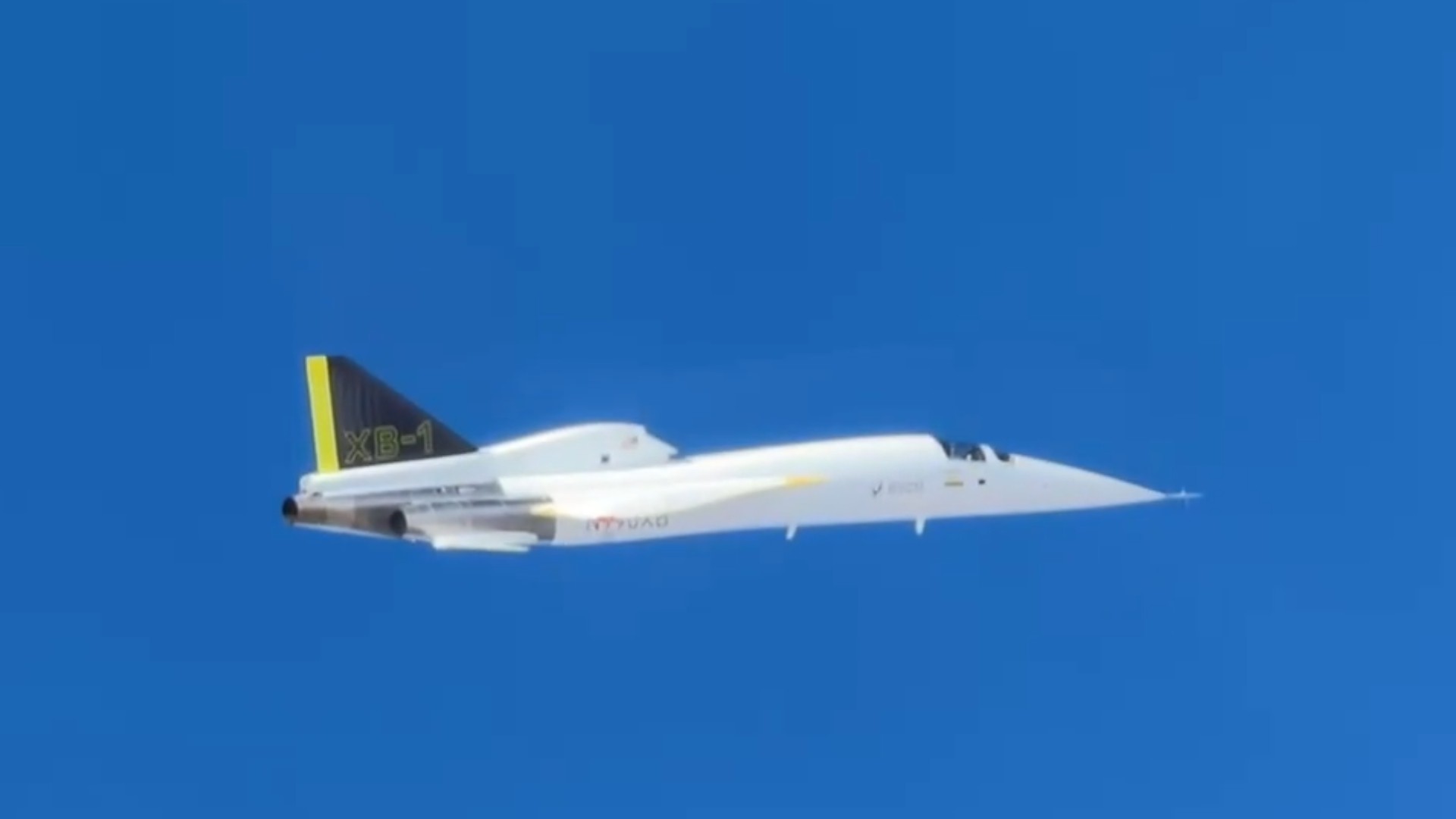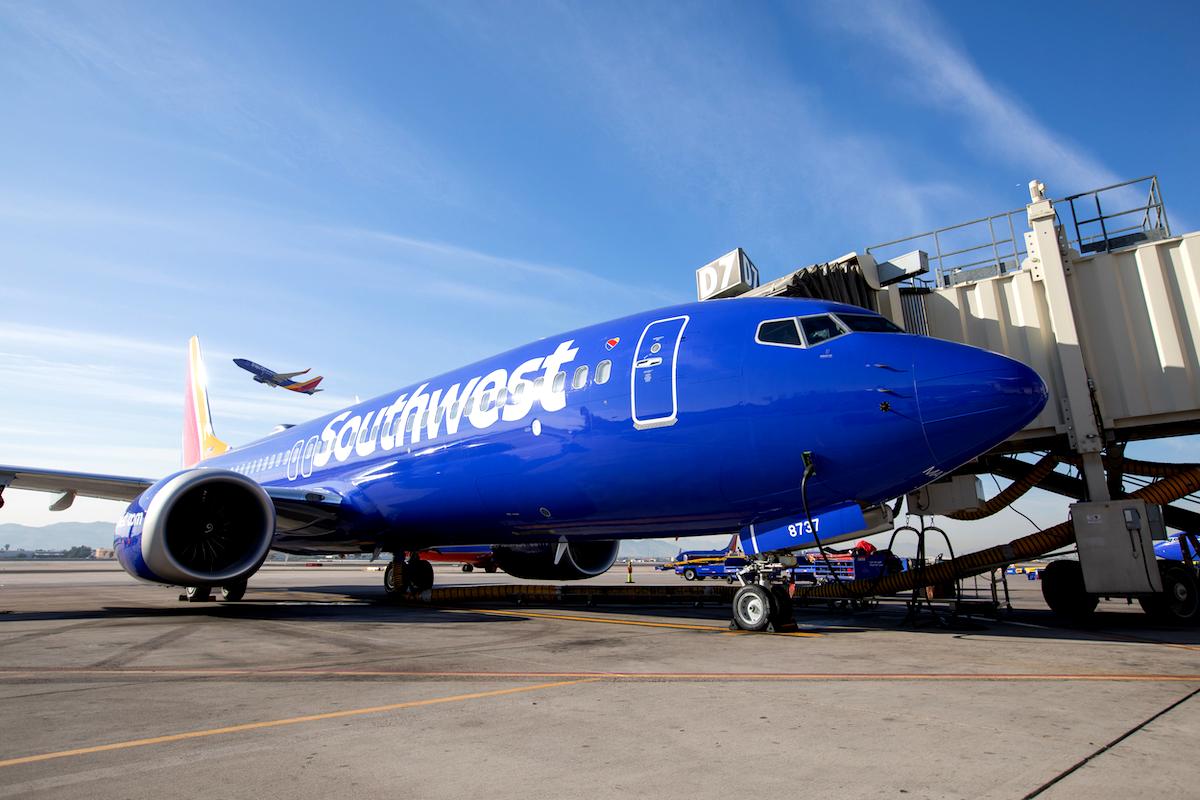IFE and IFC poised to converge and transform PaxEx
There has perhaps never been a more exciting time to be involved in inflight entertainment than right now. High-bandwidth inflight connectivity — supported by low-latency Low Earth Orbit (LEO) and multi-orbit/multi-constellation satellite solutions — plus onboard edge caching technology are together poised to change the embedded and wireless IFE experience as we know it, setting... The post IFE and IFC poised to converge and transform PaxEx appeared first on Runway Girl.

There has perhaps never been a more exciting time to be involved in inflight entertainment than right now. High-bandwidth inflight connectivity — supported by low-latency Low Earth Orbit (LEO) and multi-orbit/multi-constellation satellite solutions — plus onboard edge caching technology are together poised to change the embedded and wireless IFE experience as we know it, setting the stage for airlines to surprise and delight passengers in brand new ways, offer heightened levels of personalization, and transform #PaxEx in the process.
Qatar Airways, which is rolling out SpaceX’s Starlink LEO satcom service across its fleet, and Delta Air Lines, which uses Viasat’s high-capacity Ka-band geostationary (GEO) service, are first out of the gate with announcements that they will bring Thales’ new FlytEDGE solution to select aircraft. Leveraging edge caching technology from Netskrt Systems, the hardware will enable these airlines to store streaming video locally after it has been accessed online by a passenger, ensuring they can support an at-home experience in the sky including via seatback IFE, whilst doing so at a more cost effective price point and with less strain on the bandwidth than moving every individual stream over the aircraft connectivity pipe.
As part of their respective plans to offer free inflight Wi-Fi tied to loyalty, Star Alliance members Air Canada and United Airlines also share a vision of ultimately connecting their in-seat displays. IFE giant Panasonic Avionics and Viasat — the latter of which, it should be noted, was the first IFC provider to support a free streaming class of service to passengers’ own devices, with JetBlue’s 2013 debut of Fly-Fi — tell us that the connected seatback is indeed the future of IFE.
“What we’re seeing now is more airlines making the choice of widening out their IFE platform to airplanes where they didn’t necessarily have it before, the narrowbodies, and where they do have it then creating a more connected, personalized experience, leveraging high-speed, low-latency Internet at the same time as their applications,” says Panasonic Avionics vice president of product & portfolio management Andrew Masson. “And it’s really changing the game. It’s putting a lot of emphasis into our industry on the software side where we traditionally haven’t all been — not just Panasonic, but we all collectively haven’t been — that strong previously. We’re now upping that game.”
For Jonas von Kruechten, who serves as both principal advisor at dgtlsky and senior advisor aviation for Siden — which has developed a network agnostic intelligent caching system — the combination of broadband inflight connectivity and edge caching will “absolutely” usher in a new frontier for IFE.
“What we’re going to see is connectivity-enabled IFE, which will transform the media content mix onboard,” he enthuses. “Traditionally, the content has been a mix of non-theatrical films, shows, live TV, games. But with next-generation connectivity — whether through Starlink, Project Kuiper, or other emerging constellations and technologies — we’ll have significantly more bandwidth available to aircraft. Whether this connectivity is LEO only or a LEO/GEO hybrid, it will open up new avenues for content delivery to aircraft.”
He continues:
In the future, we may still see some non-theatrical content arriving via traditional methods. However, we’ll also see streaming of over-the-top (OTT) content where bandwidth permits. Additionally, technologies like edge caching will allow for a streaming-like experience while alleviating pressure on the connectivity pipeline. Edge caching essentially manages the onboard media content more efficiently by preloading content based on passenger preferences, using intelligent algorithms and data insights. If a passenger requests content which is not already cached, that content will be streamed. However, as it streams, it is simultaneously cached onboard for future passengers.
Notably, von Kruechten predicts that, “Over time, edge caching will become standard on most connected aircraft. It works well for both wired and wireless IFE systems, enabling more dynamic management of content, ensuring a smoother user experience, bigger content choice whilst managing bandwidth efficiently.”
Change, change, change
This paradigm shift will disrupt the current state of play. The lion’s share of widebodies and many narrowbodies flying long-haul are fitted with in-seat IFE systems. In years past, the process of bringing early run movies and television shows onboard was rather time-consuming, taking upwards of a month or more to process. Long lead times were usually required to encode titles in various formats, deliver them to the IFE hardware companies for integration and quality control, and then load them onto aircraft. By innovating with the cloud amid the downtime provided by the Covid pandemic, airlines’ Content Service Providers (CSPs) have in some instances managed to hasten this process, and even enable rapid delivery to support special promotions with studio tie-in.
But passengers are clearly keen on accessing their own OTT subscriptions in real-time — especially those who don’t download content to their tablets pre-flight. Indeed, Panasonic’s Masson predicts that, in time, some airlines flying with in-seat IFE may carry as few as 20 “emergency” titles on the server as back-up in the event of an IFC system failure, and that low-latency, high-speed connectivity and edge caching, aided by AI, will facilitate the rest of the demand.
Michael Childers, an IFE industry veteran and former nine-year chair of the Airline Passenger Experience Association’s APEX Technology Committee explains that, over time, increased connectivity bandwidth and decreased connectivity cost will facilitate this migration of IFE content loading “from slow manual updates loaded on a conventional onboard server, to much faster over-the-air (OTA) updates via cloud-based services, and the need to cache content at the edge of the cloud, reaching into the aircraft via automated workflows.”
“One of the biggest differences between a Content Delivery Network (CDN) and an edge caching network,” he notes, “is that CDNs only store content while edge caching networks can store and process content. The standards supporting open caching are being created by the Streaming Video Technology Alliance (SVTA). The major studios and content providers are actively participating in SVTA’s Open Caching Working Group, as are several IFE companies and companies active in the IFE space. These include (but are not limited to) Panasonic, Viasat, Netskrt Systems, and Siden.”
Asked by RGN if there are still some niggling licensing issues that need to be worked out around edge caching onboard aircraft, and if the studios are comfortable with this progression, Childers states:
The SVTA and the APEX Technology Committee have a long-standing liaison relationship with [industry veteran and chair of the APEX Ad Delivery Working Group] Andy Rosen and me as the liaison representatives. This gives us the ability to participate in SVTA Working Groups and to have access to SVTA standards and specifications. This means, basically, that our industry and the media and entertainment industry are collaborating on these specifications in the SVTA forum, and so long as companies in our industry are in compliance with the SVTA specifications there should be no concern about content provider approvals.
So, where does that leave airlines’ trusted CSP partners? After all, some have greatly broadened their remit over the years, not only assisting airlines in the selection and licensing of future content, but in some cases becoming involved in post-production and localization? We put the question to two prominent CSPs: Touch Inflight Solutions and Spafax.
How airline CSPs are evolving to meet their partners’ needs
Touch, which serves a bevy of airlines — including SkyTeam alliance members Delta, Aeromexico and new group member SAS – sees its role as a CSP evolving into a Digital Experience Manager (DXM), something Childers has been pushing, and indeed outlined alongside Touch product manager Wilson Capitão, in the APEX Global EXPO edition of Aircraft Interiors International last September.
DXM, explains Touch vice president of development André Valera to RGN, emphasizes integration of diverse technologies, including IFC, edge caching, and cloud-based systems. “Airlines will expect us to bridge these technologies to ensure passengers experience uninterrupted, personalized content on the seatback or personal devices and even outside of the cabin.”
Valera agrees that airlines may reduce onboard content storage in favor of edge caching strategies (which he stresses is still highly dependent on evolving business models with OTTs), necessitating intelligent content delivery systems. “We see a role for us here, through leadership in adaptive streaming solutions, and we should prioritize technologies that dynamically manage content, ensuring that what passengers want is cached and ready before they request it — I see a hybrid between local storage plus smart edge caching,” says the Touch executive.
“With passengers streaming content directly from the cloud or cached servers, CSPs need to focus on providing metadata management, licensing strategies, and analytics-driven insights to predict content demands efficiently — that means being able to manage any content sources, for any display system and anytime. Thus, our role evolves to a platform and aggregator model, with access to media assets on our cloud-based systems as a key starting point (thus so important our tech deals with Warner Bros. and Disney and hopefully more soon), enabling a true media marketplace environment for media distribution. This is going live this year with Thales FlytEDGE for Delta, for which we are the cloud-based backbone of the media supply chain.”
A core part of replicating an “at-home” experience is personalization. And Touch’s experience with Delta Sync — the US major’s ecosystem of tailored digital services and experiences available via free Wi-Fi for SkyMiles members and now coming to the seatback — is, says Valera, “a perfect example of leveraging data to provide tailored recommendations. CSPs must integrate AI-driven algorithms into IFE systems to curate real-time personalized content experiences, ensuring passenger satisfaction and engagement. We are playing a role of metadata enrichment and also integrating non-inflight trends with partnerships with the likes of Parrot Analytics and others, to boost the input of such algorithms.”
Valera continues,
As CSPs/DXMs, we need deeper collaboration with connectivity providers to ensure interoperability between IFC solutions and our platforms to deliver a unified and technically agnostic experience. This is easier said than done, but once again airlines will want someone to take this role of ‘consolidator’, to be expanded as well to onboard advertising, e-commerce, and loyalty program functionalities directly into the IFE — so there are multiple opportunities here as well.
Global travel media agency Spafax, which in 2014 built a state-of-the-art IFE technical hub in the heart of Hollywood to expedite delivery of IFE from major studios to airlines, and counts Air Canada, JetBlue and Lufthansa among its many CSP clients, agrees that the adoption of edge caching and lower-latency IFC is set to transform the IFE experience, offering airlines new opportunities to enhance passenger engagement. However, it believes this evolution also still presents challenges around content rights management, brand engagement, and ensuring a seamless passenger experience.
“The role of the Content Service Provider will be pivotal in navigating this complex landscape,” suggests Spafax VP business development and innovation Dimitrios Tsirangelos. “Spafax will play a critical role as an intermediary and advisor to airlines, ensuring that emerging technologies and content delivery models comply with complex rights frameworks while safeguarding the airline’s brand and passenger experience. This involves rights management expertise, brand engagement, collaboration with streaming partners, advisory support for new formats, real-time content management, and delivering personalized experiences. Additionally, Spafax will help airlines unlock new revenue streams through monetization and ancillary offerings.”
Tsirangelos reckons that Spafax is uniquely positioned to support airlines in this transition due to its deep expertise in rights consultancy, creative content partnerships, and IFE innovation. “From comprehensive rights consultancy and regional licensing expertise to tailored seatback solutions and streaming adaptations, Spafax brings a passenger-centric focus that ensures operational success and an enhanced experience for travelers. While it will take time for the ecosystem to fully adapt to these changes, Spafax is committed to guiding its airline partners through this evolving paradigm. As a Full-Scope Passenger Experience Agency, Spafax sees exciting new opportunities to elevate the passenger experience and is confident that it will be at the heart of delivering the step change that will result from these technological advancements.”
What is clear, however, is that a business model based largely on the licensing function alone may become ephemeral. Childers cites three factors: “First, the future of content licensing will likely be a subscription model in which the airline subscribes to a particular volume of content and pays a fixed subscription fee based on a fixed number of flights —and with access to a provider’s entire library or defined segments thereof for dynamic refresh.
“Second, while content selection curation will continue to exist so long as the licensing function itself survives, data will disintermediate or at least automate much of the selection function. And third, the licensing function itself may become ephemeral as content providers eventually eschew licensing to third parties and deal directly with the consumer via D2C services such as Disney+, Max, Paramount+, and Peacock. In this model, the passenger accesses her own D2C account via onboard connectivity — the passenger provides the content, the airline provides the pipe. However, B2B services of time-sensitive content like news and sports may withstand the change in business models, but will benefit from faster delivery.”
Von Kruechten, who now chairs the APEX Technology Committee, suggests that edge caching providers like Siden and other players will be able to curate and pre-cache content using data insights, working closely with their OTT partners and airline customers.
“Airlines can of course also continue to work with their CSPs to curate content like they have been. The key benefit of edge caching is that it allows airlines to manage their onboard media mix more dynamically, offer new personalized entertainment options, including streaming OTT video, modern IPTV, and FAST [free ad-supported television], whilst simplifying the entertainment refresh cycle through automation. Add content from the likes of YouTube to the mix, plus the growing interest in live sports. Airlines and their passengers will have many more options to deliver a unique and curated experience. The level of curation will depend on each airline’s strategy.”
But it’s also possible that some airlines will choose to have no cached content onboard (possibly just with some backup titles as suggested by Panasonic’s Masson) and rely purely on streamed content and passenger provided content – which, von Kruechten notes, will be a very connectivity intensive and thus pricey proposition. “Or, much more reasonable, leverage edge caching technology, which aims to provision an intelligently and dynamically managed library of cached content onboard and optimize it to keep the cache-miss rate as low as possible – only streaming content when necessary. This leaves more IFC capacity for other use cases such as inflight gaming, e-commerce, operational and maintenance use cases, etc.”
Von Kruechten stresses:
The decision resides with the airlines and depends on their strategy. If an airline currently offers a big content library, how does streaming fit into that? Will the airline keep their full non-theatrical library and offer streaming services additionally? Or will the airline reduce their IFE content, thus saving on the licenses, and use some of that budget to invest and promote streaming solutions and other content instead? It comes down to the respective airline’s vision for the future of IFE, passenger expectations, and budget.
I am certain, as passengers experience the benefits of next-generation connectivity, they’ll also expect more streaming options onboard. Ultimately, this shift represents a positive change for passengers, with airlines having more options to curate a more living room like experience on board. Leveraging IFC and edge caching technology for the next phase of onboard entertainment will positively impact Net Promoter Scores (NPS), and will likely become industry standard.
Your author would argue that IFE and IFC lines started to blur when JetBlue launched Fly-Fi, and that blurring and converging continues today as a variety of new broadband IFC systems come on line, including Ku-band LEO-based Starlink and Ku-band multi-orbit LEO/GEO solutions from Intelsat and Panasonic inclusive of Eutelsat OneWeb LEO service. Hughes Network Systems this year intends to launch a Eutelsat OneWeb LEO-powered IFC service. And new Ka-band LEO constellations are on the horizon, including Amazon’s Project Kuiper and Telesat Lightspeed. The latter is in line to be added as a “Ka-band/LEO satellite network operator” on Airbus’ supplier-furnished, linefit HBCplus broadband IFC program, which would enable airlines to tap Viasat or indeed other managed service providers (SES or Hughes) for their Ka-band GEO service with a Lightspeed LEO overlay.
For its part, Viasat says it is engaged in advanced discussions with Telesat to support multi-orbit IFC inclusive of Lightspeed.
“This market is evolving, with new players, services, and business models entering the space,” says von Kruechten. “The key will be to view this evolution holistically rather than through the lens of traditional industry verticals. While these verticals may still make sense in some areas, everything is converging. And it’s not just a technological shift; there are significant commercial dynamics at play as well.
“From a studio perspective, next gen IFC and edge caching open new possibilities. While there may be some revenue cannibalization—especially should airlines decide to license fewer non-theatrical titles — it also creates new revenue opportunities on the D2C side and a new approach to a technology-powered, curated passenger experience.”
Related Articles:
- Delta seeks to gain edge with Thales FlytEDGE, eyes multi-network IFC
- United accelerates Starlink equipage with E175 first in line
- How Safran Passenger Innovations drove weight out of nextgen IFE
- Panasonic Avionics in advanced talks to bring Astrova Curve to market
- Air Canada promises free, fast Wi-Fi in 2025
- SAS taps Starlink to power free inflight Wi-Fi on entire fleet
- Qatar Airways flies first 777 with Starlink; divulges equipage plan
- Viasat grows in-service tails despite United’s Starlink pivot
- Thales takes IFE innovation to the edge with edge-caching and cloud
- American stays the course with wireless IFE for most narrowbodies
- APEX TECH to tackle pressing PaxEx questions as IFE and IFC lines blur
- Bandwidth and other barriers stymie connected D2C/IFE on widebodies
Featured image credited to Mary Kirby
The post IFE and IFC poised to converge and transform PaxEx appeared first on Runway Girl.























.png)





















![‘Companion’ Ending Breakdown: Director Drew Hancock Tells All About the Film’s Showdown and Potential Sequel: ‘That’s the Future I Want for [Spoiler]’](https://variety.com/wp-content/uploads/2025/02/MCDCOMP_WB028.jpg?#)
























